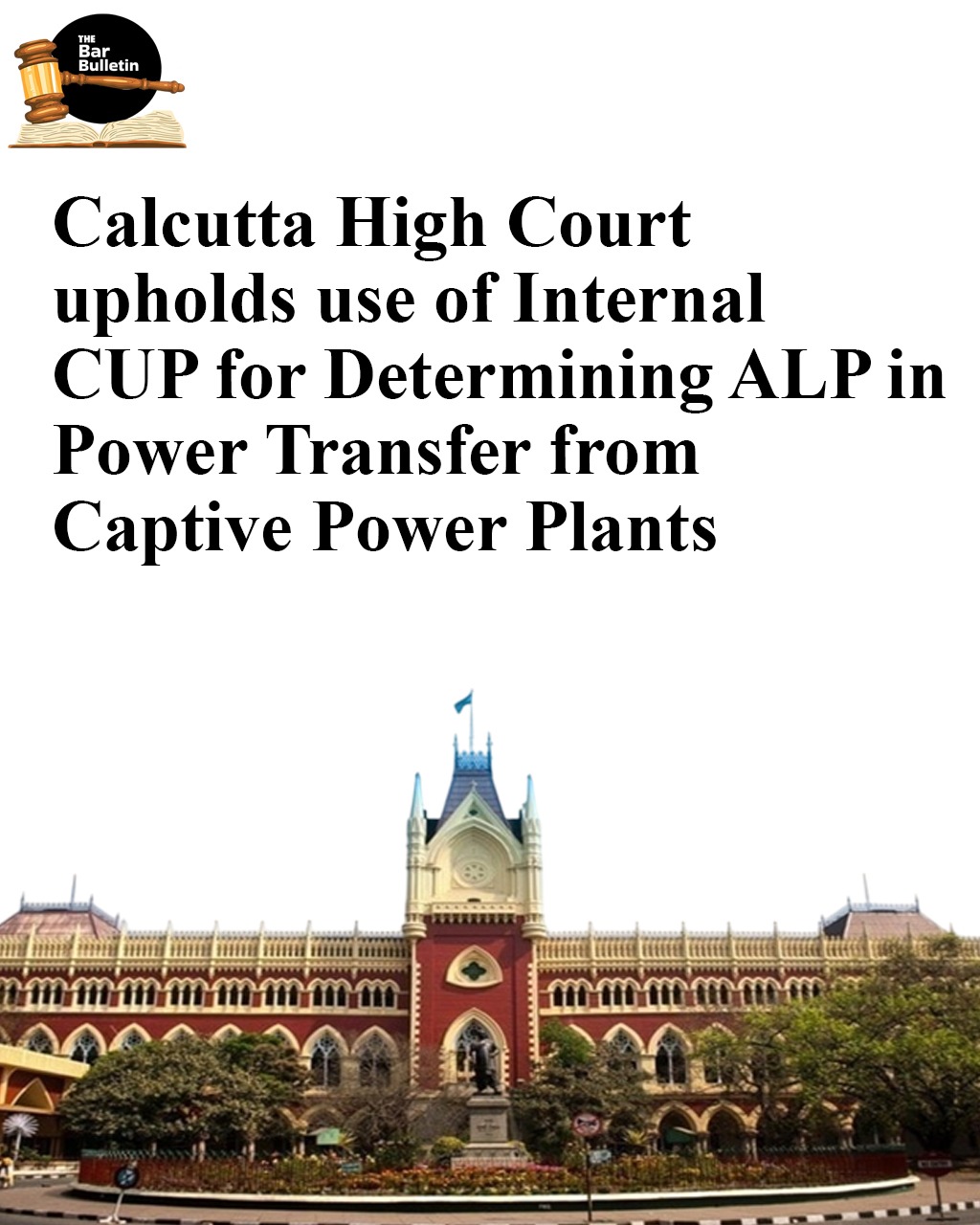The Calcutta High Court has affirmed the use of the Internal Comparable Uncontrolled Price (CUP) method as the most appropriate means for determining the Arm’s Length Price (ALP) for the transfer of power from Captive Power Plants (CPPs) to the assessee’s manufacturing units. The decision aligns with the Supreme Court’s precedent in CIT vs. Jindal Steel and Power Limited, (2024) 460 ITR 162 (SC), which held that the rate at which State Electricity Boards (SEBs) supply power to consumers constitutes the market value for deduction claims under Section 80-IA of the Income Tax Act.
The Division Bench comprising Chief Justice T.S. Sivagnanam and Justice Chaitali Chatterjee (Das) observed that the ALP in cases of transfer pricing adjustments cannot be determined by taking the average market rates of power supply units to distribution companies. Since the respondent here is not in the business of selling power to distribution companies, the Bench clarified that the ALP has to be determined bearing in mind the reason behind the establishment of the Captive Power Plants (CPPs), to ensure uninterrupted power and to save on cost of electricity which otherwise has to be paid to the State Electricity Board (SEB).
It was when the issue regarding transfer of power from the respondent’s eligible units, namely the Captive Power Plant (CPPs), to the respondent’s non-eligible units, namely the manufacturing units, came under the scanner of the TPO, he opined that the transfer of power between eligible and non-eligible units cannot be made at the rate computed based on landed cost of SEBs which were distribution entities and not power generating companies. He was of the view that the benefit under Section 80IA can accordingly be claimed only based on the rates charged for the sale of power by the generating companies to the distribution companies.
On appeal, the CIT(A) accepted the contention raised by the respondent after noting that both non-eligible units had also purchased power from the respective State Electricity Boards apart from procuring power from their Captive Power Plants, and therefore agreed on the applicability of the Internal CUP method as adopted by the respondent. This finding of the CIT(A) was confirmed by the ITAT.
The matter travelled to the High Court, whereby the scheme of the Electricity Act, 2003, has been referred to observe that a person may construct, maintain, or operate a Captive Generating Plant and dedicated transmission lines, and captive plants will have the right to open access to carry electricity from captive plants to the destination of its use and no surcharge is leviable in case open access is provided to captive units by the central or state transmission utility or the transmission licensee involved in the distribution/transmission of power.
Therefore, since there is no embargo on other power-generating companies to directly sell the power to such a consumer at a mutually agreed rate, the Court thus concurred with the views expressed by the ITAT that the consumer/ contracting parties will certainly desire to purchase electricity at a lesser rate than the rates offered by the State Electricity Board, whereas the Captive Power Plants/generating companies would desire to get maximum rate on the sale of power in unregulated and uncontrolled transaction and both the parties would settle at mutually agreed rates irrespective of the rates at which the State Electricity purchases power from other generating units.
Appearances:
Appellant/Revenue: Advocate Prithu Dudhoria
Respondent/Assessee: Advocates Subhas Agarwal, Rajarshi Chatterjee, S. Sahani, and Amit Shaw
![]()

